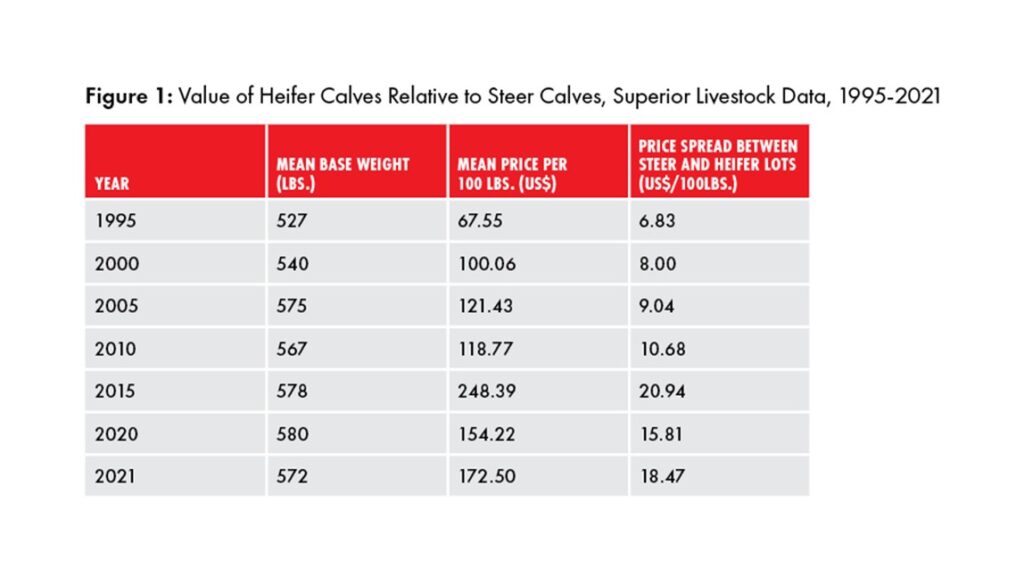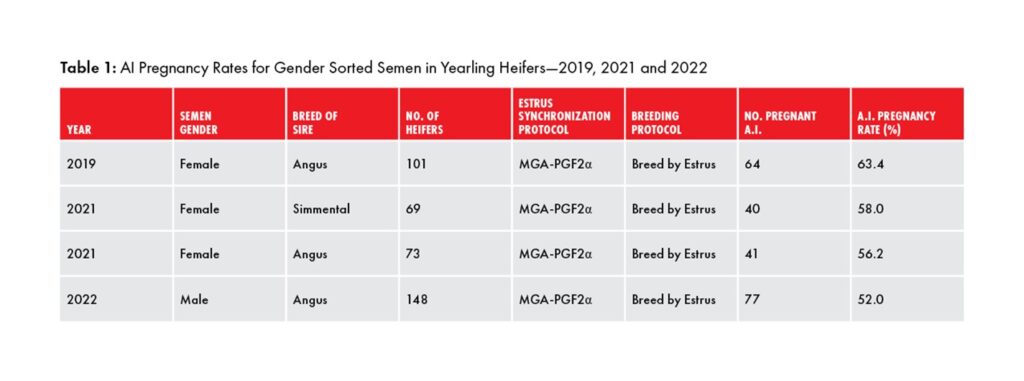A “significant” price spread between steers and heifers is encouraging producers to consider sexed semen use across the waters in the USA, according to Ken Odde, DVM and Ph.D., professor and department head emeritus of the Department of Animal Sciences and Industry at Kansas State University.
Odde believes that “male-sexed semen is an opportunity to capture value”, helping farm’s bottom lines by creating cattle that the market demand.
Since retiring from academia, Odde has focused on creating more profitability for his family’s commercial cow-calf enterprise in South Dakota, USA.
“About six years ago, I was sitting at the sale barn in Mobridge, South Dakota, and the price spread between steers and heifers just struck me that day,” Odde says.
From that “aha moment,” Odde started to pursue what a sexed semen breeding programme could look like for his enterprise.
He shares strategies and protocols to consider for success, including fertility differences between cows and heifers, the use of split-time or fixed-time artificial insemination (AI) and the value of using breeding indicator patches to measure estrus intensity.
Value of breeding for males
Before breeding with sexed semen, Odde looked back at industry trends to see the economic impact of breeding for more males.
“We have years of history when most sexed semen was targeted at producing females. Breeding for males is a shift in thinking, and ultimately it is driven by how high the price difference is between steers and heifers.”
Data from Superior Livestock (see Figure 1) shows the price per hundredweight (cwt) difference between steers and heifers has been on an “upward” trend for nearly 30 years.
Odde says the price difference between steers and heifers has been primarily driven by increasing carcass weights and the rising cost of gain.

Feedlot closeout performance data in Kansas (see Figure 2) from August 2017 showed the average cost of gain was $5.66 per cwt higher for heifers versus steers.
That year, he added, corn was relatively cheap to feed at $3.91 per bushel.
In August 2022, the average cost of gain was $12.77 per cwt higher for heifers than for steers when the corn price was $8.69 per bushel.

“Steers can be fed to higher weights more efficiently. The trend of increasing carcass weights could be a driver of producing more male calves with sexed semen, particularly when feed prices are higher.”
Experience
The first set of females to be bred with sexed semen on Odde’s ranch used maternal female sexed semen on heifers (see Table 1) and predominantly utilised terminal male sexed semen on cows (see Table 2).
Following an estrus synchronization protocol, heifers were bred by visual heat detection using ESTROTECT Breeding Indicator patches to aid in estrus detection during five days of monitoring. The heifers’ AI pregnancy rate was 63.4%.

In the first year, cows were bred using multiple protocols. With fixed-time AI, cow reproduction rates were 40.9%. Two cow groups were bred using split-time AI at 70 hours post prostaglandin injection for cows with activated ESTROTECT patches.
If patches were not activated, insemination happened at 90 hours with an injection of GnRH. The split-time groups had pregnancy rates of 45% and 47%.

“We think with split-time AI, we were able to pick up a few more cows running them through a second time.”
“However, it is pretty labour intensive, so we have moved towards more fixed-time AI with the cows.”
In the third year of research, male-sexed semen was used across all heifers and cows.
“We have learned we get better fertility on our yearling heifers than on mature cows.”
“We can easily produce more bull calves from our heifers, so that is something we want to evaluate further.”
Words of advice
If you are considering breeding with sexed semen, Odde has tips.
Odde suggests using a protocol that helps make chute-side breeding decisions based on estrus intensity via a breeding indicator patch.
If half of the patch or more is rubbed off, females are good candidates to be bred with sexed semen.
Should less than half of the patch surface ink be rubbed off, it is best to use less expensive conventional semen to help manage the costs of your genetics investment, he recommended.
Keeping an eye on market trends is another management practice to consider, he advised before adding “you need an understanding of the economic dynamics”.
For some herds, it may work better to develop more replacement heifers via sexed semen and marketing those replacements to terminal-focused operations, particularly when replacement females are in demand.
“It could be that male-sexed semen works well in some situations, and a few years later, it may not have the same incentive,”
“When there is a good price difference between steers and heifers, it can really work well,” he concluded.





